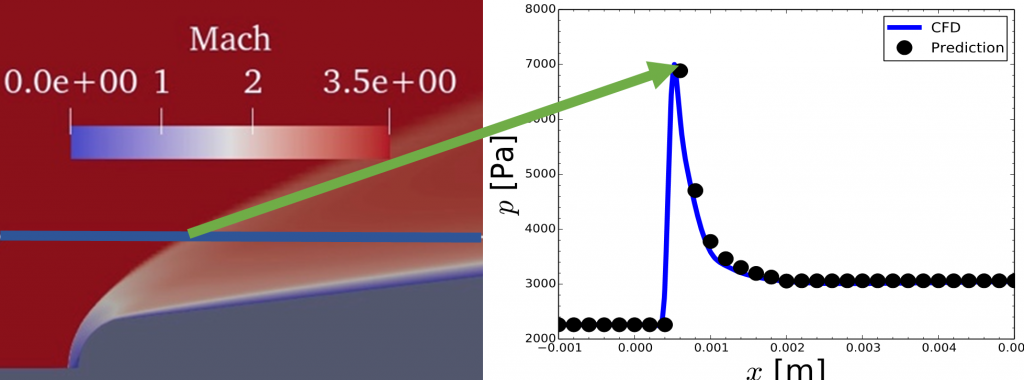
Assistant Professor Steven A. E. Miller, Ph.D. received the 2021 Defense Advanced Research Projects Agency (DARPA) Young Faculty Award for “Analytical Prediction of Near-Field Hypersonic Aerodynamics.” The research will be conducted within the Theoretical Fluid Dynamics and Turbulence group, which Dr. Miller leads.
Prof. Miller’s group will create a fast and accurate analytical method to predict near-field aerodynamics for existing sonic boom propagation solvers, hypersonic sonic boom signatures, and tracking hypersonic weapons.
Hypersonic vehicles and aerodynamic flow-fields are informally those where the Mach number, the flow or vehicle speed relative to the local ambient speed of sound, exceeds five. Dr. Hsue-Shen’s and Sir James Lighthill’s mathematics (both prevalent in the 1950’s) inspired Miller’s approach.
Present methods for hypersonics rely on time-consuming computational fluid dynamics (CFD uses supercomputers to solve aerodynamic problems) or more limited mathematical models. Experiments are often not possible for a large part of the hypersonic flight regime. This new research aims at overcoming the shortcomings of both approaches.

Analytical prediction refers to methods that do not use experimental approaches such as wind tunnels or flight-tests and do not rely on computers. The outcome of the research will be mathematical solutions that will explain the physics, that can be evaluated in seconds, and represent a high-accuracy solution to the equations that govern aerodynamic flow-fields. These equations are the Navier-Stokes equations and are named after Claude-Louis Navier (French) and George Gabriel Stokes (Irish). These equations remain unsolved for centuries and no general solution is known to exist.

The new approach uses an analytical based method that combines the laws of mass and momentum equations of Navier-Stokes in the form of an integral solution for density, converted to pressure, via a newly devised nonlinear Green’s like function to predict the near-field. One such example prediction is shown in the accompanying figure.
Upon success, hypersonic vehicle designers will be able to quickly predict sonic boom signatures in minutes relative to traditional methods, such as CFD that use our nation’s largest supercomputers or extremely costly wind tunnel experiments. US intelligence will be able to quickly assess and estimate sonic boom signatures of hypersonic vehicles from adversaries such as Russia and China.
The research will also yield a basic understanding of aerodynamics for civilian aviation. For example, commercial supersonic flight will benefit from a new design tool for aircraft like the X-59 Low Boom Demonstrator, which is currently being built and flight tested by NASA.

Dr. Miller conducts research in theoretical fluid dynamics, theoretical aeroacoustics, and related disciplines. He joined the University of Florida Department of Mechanical and Aerospace Engineering in August of 2016. Preceding his time at Florida, he spent seven years as a Research Aerospace Engineer at the NASA Langley Research Center. He received his Ph.D. and M.S. in Aerospace Engineering from the Pennsylvania State University and his B.S. in Mechanical Engineering from Michigan State University.
Dr. Miller has previously won other awards including the NASA Early Career Achievement Medal for theoretical aeroacoustics, the NASA Langley Center Directors Commendation for supporting the Space Shuttle Program, the Doug Ensor Award, the AIAA Hampton Roads Section Robert A. Mitcheltree Young Engineer of the Year Award, and the AIAA Laurence J. Bement Young Professional Paper Award.
